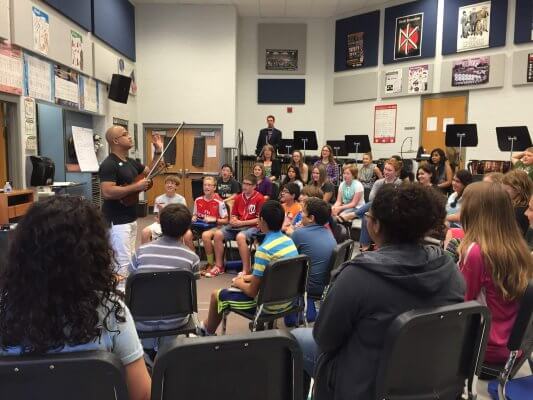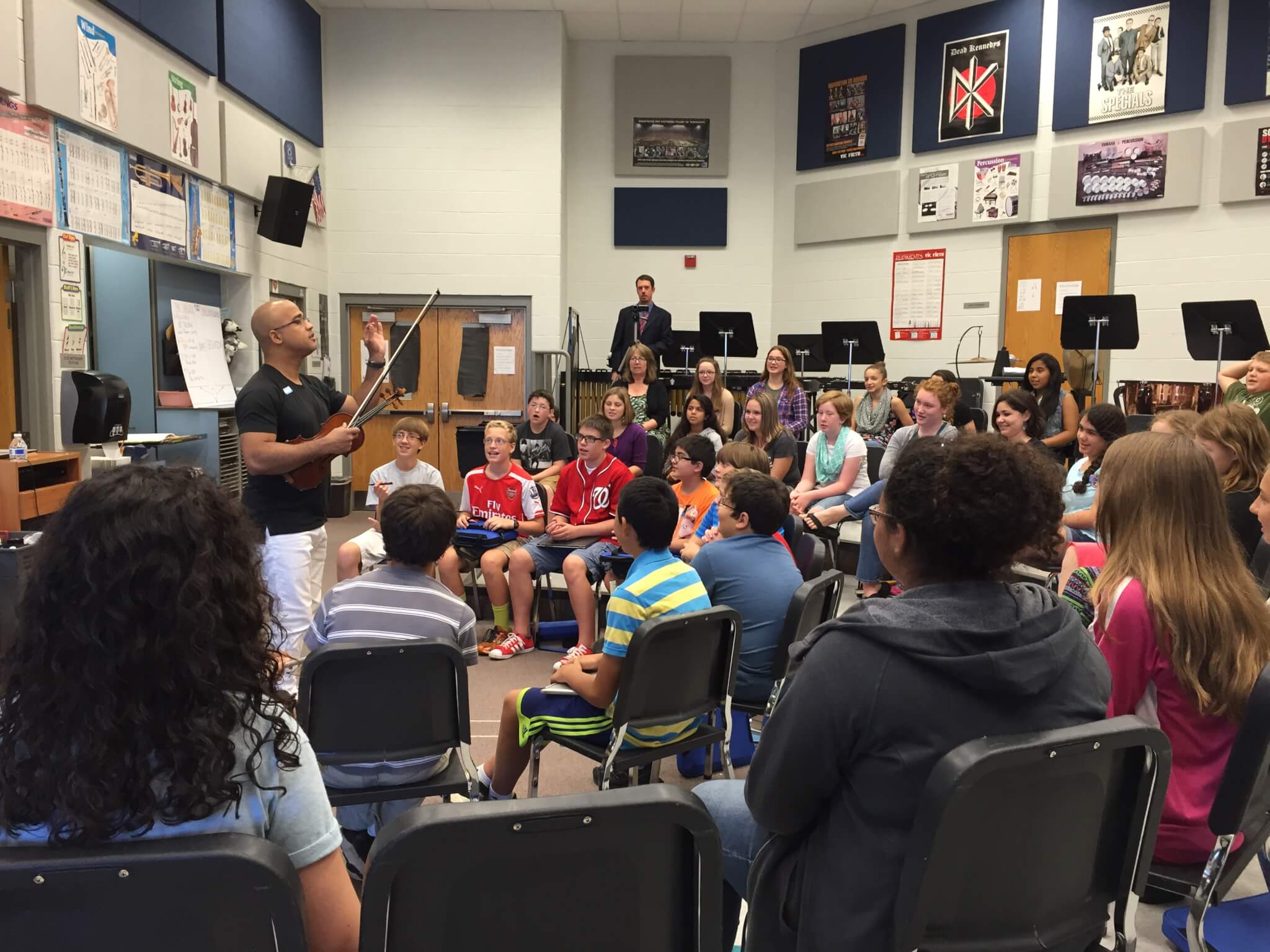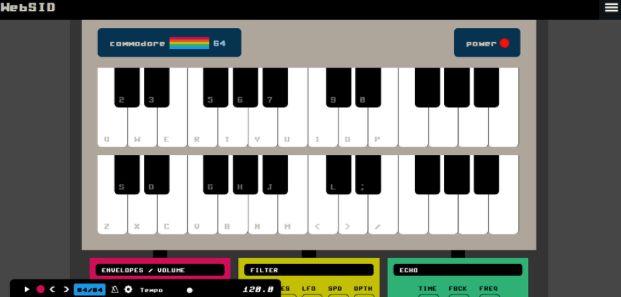“How do we make peace with this thing?” acclaimed violinist and composer Daniel Bernard Roumain said as he looked at his laptop in front of a room full of Shenandoah students studying music education.
“I don’t know,” he replied, to himself, before moving on to prove himself wrong and provide some answers in a very hands-on September 2015 masterclass.
Roumain, who also goes by DBR professionally, was at Shenandoah University to perform “BLACKBIRD, FLY: A Concert for Voice, Body, and Strings” with arts activist/spoken word artist Marc Bamuthi Joseph as part of Shenandoah Conservatory’s Performing Arts Live series. Roumain is known not only for his compositions, but also his collaborations with Philip Glass, Cassandra Wilson, Bill T. Jones, Savion Glover and Lady Gaga. He began playing the violin at age 5, as a Haitian child growing up in South Florida. “BLACKBIRD, FLY” weaves together a tapestry of movement, narrative, and Haitian folklore with a hip hop aesthetic. The Marion Park Lewis Foundation provided support for Roumain and Joseph’s educational activities at Shenandoah and in the community.
Roumain recalled the words of his childhood music teacher, Mr. Miller, who told him, quite early on: “I want you to hold onto this violin. This violin is going to get you through.” Today, many students hold on to laptops or smartphones or tablet computers in the same way. But, in the virtual world, virtual instruments also exist. And perhaps that’s where music educators can connect more fully with students – through technology.
After making sure everyone in the masterclass had their laptops at the ready, he happily cried “Let’s Go!” and sent class members to a site that creates sounds from the electronic past: music, a la a Commodore 64 computer.
“Start playing with it. You’ve got to start playing with it,” said Roumain, who includes electronic instruments in his work and takes a highly creative approach to his violin, which, in his hands, can become a percussive instrument or mimic the sound of an electric guitar. As he has mentioned, his approach is both Prince and Paganini. “My dream is of a laptop orchestra,” before sending the students to another site for a Tone Matrix, which is, as the kids say (or maybe they don’t say as much anymore, said the 44-year-old), “hella cool.”
He even played along with the tone matrix.
“Let’s do an event piece using a tone matrix,” said Roumain, who holds a doctorate in music composition from the University of Michigan. He picked two students to come forward and encouraged both to come to a piano bench at center of the room from opposite sides, to create a dramatic effect. His inspiration came from famed choreographer, dancer and artistic director Bill T. Jones, who he said claims “all the arts are theatrical.”
The students then each took a part of the event piece, which was designed so that even a person unschooled in music could follow it. Each provided their tones, and the result was, according to Roumain, “gorgeous.”
The piece, and the virtual instruments, inspired discussion. Roumain asked what kind of relationship can be had between acoustic instruments and mobile devices and laptops. “Recording” was one answer, and from a teacher’s point of view, “that’s very powerful,” Roumain said. Another student said the technology allows you to create your own ensemble and manipulate it. Yet another participant — who is already a teacher — noted that the technology gives students another avenue for creativity.
Although Roumain offered up ideas on how technology can inform music instruction, he also emphasized that the tools used don’t need to be extravagant (hence, the Commodore 64 keyboard and tone matrix). Don’t get bogged down in the hippest, coolest thing, he said. “Because the hippest, coolest thing happened yesterday.”
Roumain, who has noted in interviews that he views himself as a teacher as well (check out his methods in this great video from the Boston Pops), also took his message straight to students at to Admiral Byrd Middle School in Frederick County, Virginia, as part of his visit, where several Shenandoah music education students observed his methods.
“DBR is an exceptional artist and educator,” said Admiral Byrd band teacher B.J. Norris, who is earning his master’s degree in music education at Shenandoah Conservatory. “His ideas on virtual integration of music into performance was a new avenue to try to integrate into future musical teaching.”

Photo Credit: B.J. Norris
Lofton’s words harkened back to questions Roumain asked Shenandoah’s students to ponder in preparing to teach. “Would you want to attend your own class?” “Is your class vital?”
How about you? Would you want to attend a class given by a teacher/performer/musician of Roumain’s caliber as you learn how to be a music educator? If your answer is yes, it’s time to think about a conservatory-based music education program.







